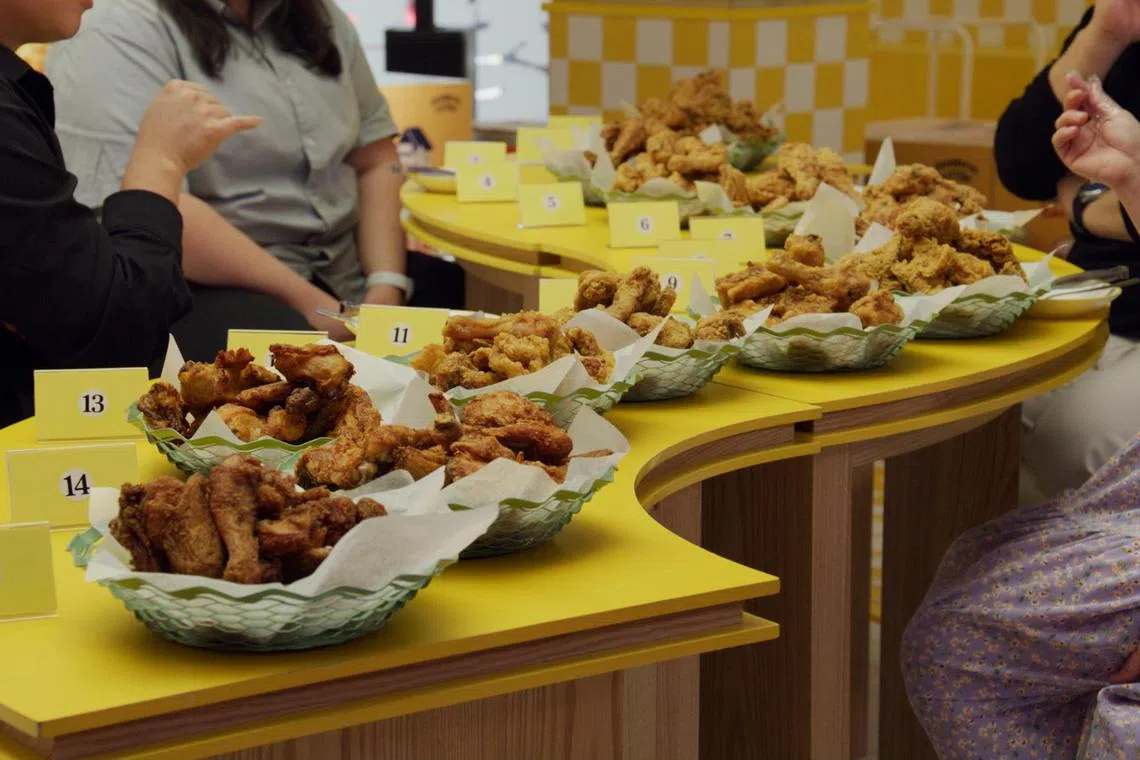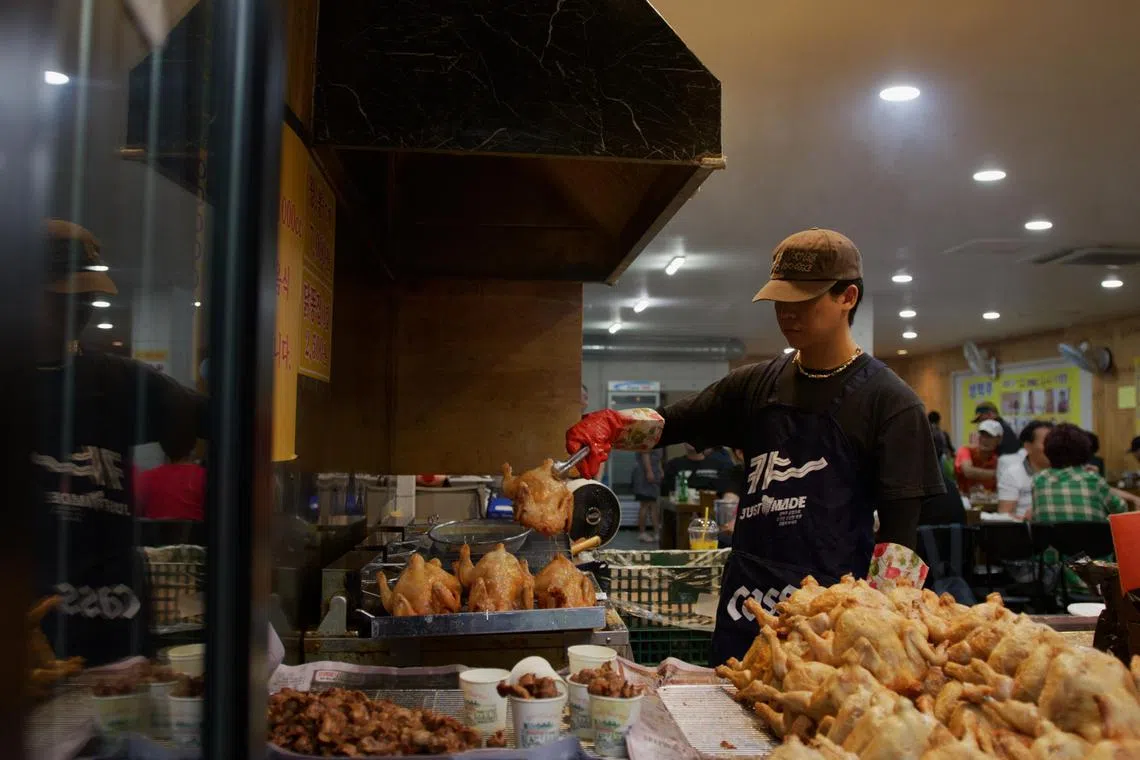Binge-worthy: Korean Fried Chicken Rhapsody serves up shameless food porn
Sign up now: Get ST's newsletters delivered to your inbox

The two-part documentary, Korean Fried Chicken Rhapsody, delves into the country's relationship with one of its favourite foods.
PHOTO: NETFLIX
Follow topic:
Korean Fried Chicken Rhapsody
Netflix
3 stars
Korean Fried Chicken Rhapsody, a docu-series about South Korea’s devotion to the titular dish, is as kooky as it sounds.
A loose history of the country’s relationship with one of its favourite foods, it suggests that fried chicken is much more than a satisfying snack.
Here are a few reasons to devour the two-part documentary that is available on Netflix.
1. A national obsession
The show says there are more than 600 fried chicken brands in South Korea and 41,000 individual chicken eateries – versus a mere 37,000 McDonald’s outlets.
A festival devoted to chimaek – the classic pairing of fried chicken and beer – draws a million people, and there is a famous street lined with nothing but fried chicken joints.
The implication is that South Korea’s love affair with the dish is unrivalled, although little is offered by way of comparison – either with other chicken-loving countries or popular Korean dishes, so this is a fairly subjective assessment.
But who needs data when you have hours of video of people chowing down on the stuff?
2. Chicken power

Celebrity chef and TV presenter Baek Jong-won in Korean Fried Chicken Rhapsody.
PHOTO: NETFLIX
The series assembles a few pundits to give it some intellectual heft.
They include a comedian, a couple of historians, the author of a book about Korean fried chicken and a few “chimmeliers”, or connoisseurs of the dish.
Chimaek, claims celebrity chef and TV presenter Baek Jong-won, is nothing less than a cultural phenomenon.
And Jeong Eun-jung, author of the book Korean Chicken Story, argues that it is a powerful force for social cohesion and that “no other food is as accessible”.
These statements are all so over the top, but delivered with such seriousness that you cannot tell if they are just hyping it up for the series or if South Koreans really are that mad for fried chicken.
3. South Korean innovation

The show says there are more than 600 fried chicken brands in South Korea and 41,000 individual chicken eateries – versus a mere 37,000 McDonald’s outlets.
PHOTO: NETFLIX
Much of the show is shameless food porn, with lots of gratuitous, studio-lit and slow-motion close-ups of chicken being seasoned, brined, battered, fried and dressed.
The viewer is walked through all the permutations of the dish in South Korea, including the most famous version, where the bird is anointed with a sweet, spicy sauce.
Then you get a potted history that acknowledges its American roots, starting with the African slaves who may have come up with it first and the soul food spots in New York that inspired the founder of the first Korean fried chicken franchise in the 1970s.
But, as endearing as this obsession with all things fried and chicken is, it is hard not to think the series exaggerates more than a little.
What it does rightly acknowledge, though, is the country’s culture of innovation, which often bleeds into imitation.
The show does not make this analogy, but one cannot help but think about K-pop, which was also derived from American popular culture.
Like K-chicken, K-pop has spawned many clones of itself, identical except for tiny variations, yet distinctively South Korean and crowd-pleasing.
Now, that would be a documentary worth watching.

